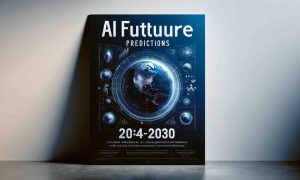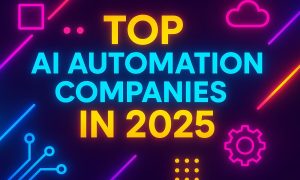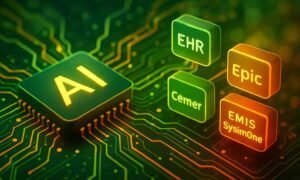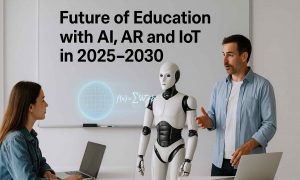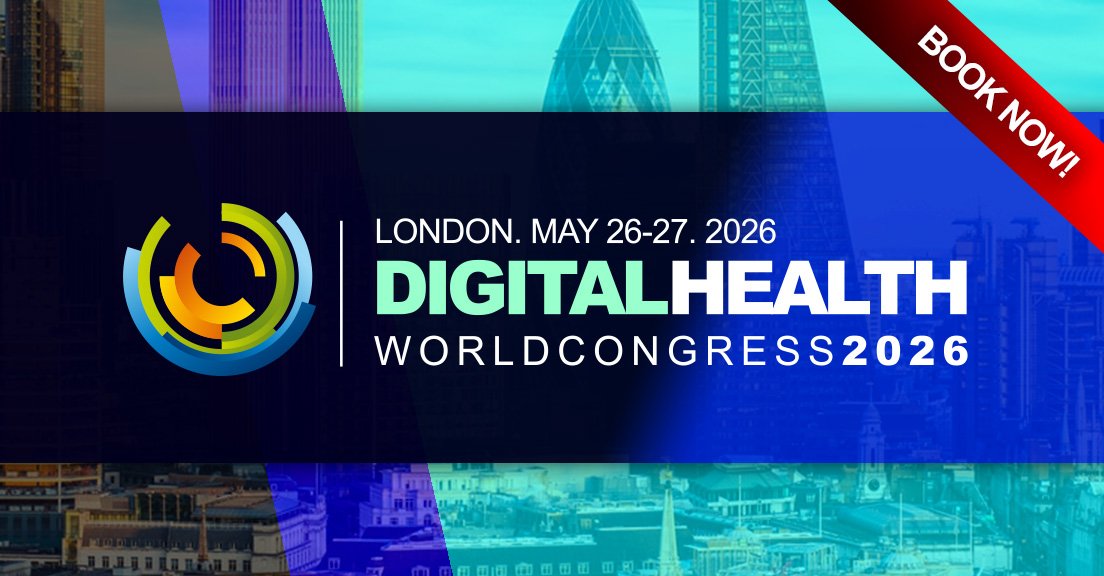

The evolution of Artificial Intelligence (AI) is reshaping industries and societies across the globe.
Looking forward to 2025, 2030, and 2050, we anticipate AI to continue playing a transformative role in sectors ranging from healthcare and transportation to finance and cybersecurity. In this article, we explore the top 10 AI future predictions, highlighting how advancements will impact regions including London, the UK, Europe, Japan, India, and China. Each prediction offers a glimpse into a future where AI is at the core of innovation, prosperity, and economic growth.
1. AI-Powered Healthcare Transformation
By 2025, AI is projected to significantly enhance healthcare systems across Europe and Asia. In the United Kingdom, the National Health Service (NHS) aims to use AI for early disease detection and personalized treatment plans, aiming to improve patient outcomes and reduce costs. AI tools are already being used to detect diseases such as cancer more effectively than traditional methods, reducing diagnosis times (NHS). In Japan, a country grappling with an aging population, robotic caregivers powered by AI are helping address labor shortages in elderly care, providing support for day-to-day activities and monitoring health conditions.
By 2030, AI will enable real-time health monitoring via wearable devices, allowing continuous assessments of vital signs and early intervention. In India, AI-driven telemedicine platforms are expected to expand healthcare access to rural areas, bridging the gap between urban and underserved populations (Government of India). AI-based analytics will predict outbreaks of diseases and help manage health crises more effectively.
By 2050, AI could revolutionize healthcare further by enabling advanced prosthetics and organ regeneration technologies. In China, which is heavily investing in biotechnology, AI will likely make significant strides in genomics and personalized medicine. China’s AI-driven advancements in genome sequencing could allow for precise interventions at the cellular level, potentially extending human lifespans (Tencent AI Lab).
2. Autonomous Transportation Networks
AI adoption in transportation is set to accelerate by 2025. In London, AI-driven traffic management systems are being implemented to alleviate congestion and optimize traffic flow. Transport for London (TfL) is already using AI to manage traffic lights dynamically based on real-time data, reducing delays and improving fuel efficiency (TfL). In Japan, companies like Toyota are trialing autonomous vehicles (AVs) for public transport in urban centers, aiming to enhance the mobility experience (Toyota Global).
By 2030, Europe anticipates a widespread deployment of AVs, with AI optimizing routes, improving safety, and reducing emissions. Waymo, a subsidiary of Google, is leading autonomous driving trials across Europe, with an emphasis on providing safe, efficient transportation (Waymo). In India, where urban traffic congestion is a major issue, AI-driven autonomous solutions tailored for local conditions will help make commuting less time-consuming and more organized.
By 2050, AI will facilitate fully integrated, self-regulating transportation ecosystems. China aims to integrate AI with its Belt and Road Initiative to manage complex logistics networks, improving trade efficiency across continents. In addition, hyperloop technology combined with AI may become a reality, reducing the time taken for cross-country travel significantly (China Ministry of Transport).
3. AI-Augmented Education Systems
The education sector is being transformed through AI advancements. By 2025, universities across the UK will employ AI-based virtual tutors to provide personalized learning pathways. Cambridge University has already started integrating AI in its curriculum to assist with interactive teaching and grading (Cambridge University). In India, AI-driven platforms like Byju’s are making quality education accessible to students in remote regions, addressing the gap in education equity (Byju’s).
By 2030, AI will facilitate immersive learning environments using Virtual Reality (VR) and Augmented Reality (AR) to make lessons more interactive and engaging. Japan, for instance, is expected to see increased adoption of VR classrooms to boost technical education and practical learning. The focus on lifelong learning is also likely to lead to AI-enabled training programs that help workers adapt to a changing job landscape (MEXT, Japan).
By 2050, AI in education could support real-time language translation in classrooms, enabling truly global and collaborative learning experiences. China plans to implement intelligent learning environments that adapt not only to the students’ academic needs but also to their emotional states, improving outcomes through personalized learning (Tencent AI Lab).
4. AI in Environmental Sustainability
AI’s contribution to environmental sustainability is becoming increasingly evident. By 2025, AI is expected to play a major role in resource monitoring and conservation efforts in Europe. Google’s DeepMind has partnered with environmental groups to use AI for tracking wildlife, mapping endangered habitats, and monitoring climate change (DeepMind). In China, smart city projects are leveraging AI to optimize energy usage and reduce emissions, making urban living more sustainable.
By 2030, AI-powered predictive analytics could greatly enhance disaster management capabilities. In India, for instance, AI could be used to predict flooding and droughts, helping communities better prepare for natural calamities. Precision agriculture, enabled by AI, could boost crop yields while conserving resources, helping to meet the growing food demand without compromising the environment (Government of India).
By 2050, AI could foster the development of net-zero urban ecosystems. Japan, as part of its sustainability goals, is looking at implementing AI-managed waste reduction systems to promote a circular economy. In the UK, AI is expected to help achieve net-zero emissions by optimizing renewable energy usage and carbon capture technologies (European Environment Agency).
5. AI-Powered Financial Services
AI’s role in the financial sector is transformative. By 2025, major financial institutions in London are utilizing AI to improve fraud detection and offer personalized customer services. HSBC has adopted machine learning models to analyze transaction patterns and identify fraudulent activities before they occur (HSBC). In China, AI is enabling fintech companies like Ant Group to provide microloans and tailored financial products to underserved customers (Ant Group).
By 2030, AI will be instrumental in real-time investment decision-making and risk assessment. Robo-advisors will provide personalized advice for investors, leveraging AI to analyze vast amounts of data and offering portfolio optimization. India‘s banking sector is also set to utilize AI for enhancing financial inclusion, helping millions of unbanked citizens get access to basic financial services (Reserve Bank of India).
By 2050, the financial sector could see the proliferation of autonomous banking systems, with AI managing investments, savings, and lending autonomously. Japan’s fintech ecosystem may lead to completely seamless transactions with AI ensuring transparency and security. Meanwhile, blockchain technology coupled with AI will ensure that financial transactions are secure, fast, and decentralized, transforming the global economy (Financial Conduct Authority).
6. AI in Manufacturing and Industry 4.0
AI is crucial in transforming manufacturing into an Industry 4.0 model. By 2025, Germany and other parts of Europe will integrate AI for predictive maintenance and quality control, ensuring smooth production lines. Companies like Siemens are leading the charge, implementing AI-driven industrial automation systems that enhance efficiency (Siemens).
By 2030, Japan will have embraced AI-powered robotics to handle complex assembly tasks, reducing dependency on human intervention. The “Made in China 2025” initiative will also ensure that China emerges as a leader in high-tech manufacturing through AI adoption, setting a benchmark for global manufacturing standards (Made in China 2025).
Looking forward to 2050, India and the UK may implement self-optimizing production systems that autonomously detect inefficiencies and adapt processes. AI-driven mass customization could revolutionize the production process, meeting consumer needs at an individual level while reducing waste and resource consumption (Ministry of Industry and Trade, India).
7. AI and Cybersecurity
As the digital landscape evolves, so does the threat of cyberattacks. By 2025, AI will be central to cybersecurity efforts in Europe. AI-based tools are being used to detect and mitigate threats in real-time, safeguarding critical infrastructure. In India, AI-driven cybersecurity companies are emerging, providing next-generation defense systems to protect against sophisticated threats (CISA).
By 2030, AI will enable fully autonomous security systems capable of predicting cyberattacks before they happen. In China, AI research and development are pushing the boundaries of encryption technology, ensuring data remains private and secure, even as quantum computing grows (China Ministry of Public Security).
By 2050, AI will lead to self-learning cybersecurity protocols that evolve alongside threats. Japan will likely implement AI in national cybersecurity defense strategies to address vulnerabilities in connected devices and infrastructure. The UK might see entirely decentralized cybersecurity, where AI systems work collaboratively to secure networks and detect anomalies with extreme precision (NCSC UK).
8. AI in Retail and Consumer Experience
The retail sector is another domain where AI is making waves. By 2025, London and other major cities in Europe will utilize AI to enhance in-store experiences, using facial recognition for personalized recommendations and cashier-less checkout. Amazon Go is at the forefront of this, having expanded its concept of AI-driven stores across major cities (Amazon).
By 2030, China‘s use of smart mirrors and augmented shopping tools could become widespread, offering a seamless and personalized shopping experience both online and offline. AI chatbots will be crucial in ensuring customer engagement and satisfaction at every step of the journey, from product search to after-sales service.
Looking towards 2050, AI could enable fully personalized retail experiences, where shoppers get custom-manufactured products based on their preferences. India is likely to see the rise of AI-powered mobile shopping vans that bring personalized retail experiences to remote areas, ensuring everyone can access goods and services conveniently (Reliance Retail).
9. AI in Agriculture
The agriculture sector is undergoing a transformation with AI integration. By 2025, India and China will deploy AI-powered precision agriculture tools, using drones and satellite imagery to monitor crops and optimize resource use. John Deere is at the forefront of using AI to enable smart tractors and farming solutions that enhance productivity (John Deere).
By 2030, Japan will lead in vertical farming innovations using AI for climate control and crop optimization in urban environments. AI will help farmers make data-driven decisions, from choosing the right seeds to determining the best time for harvesting.
By 2050, AI could enable fully autonomous farms where drones, robots, and AI systems work in tandem to maximize yields while minimizing human intervention. Africa, with its vast arable lands, could see a surge in agri-tech startups using AI to improve food production, alleviate hunger, and ensure food security in an increasingly challenging climate (FAO).
10. AI in Entertainment and Media
AI is transforming how we consume entertainment and media. By 2025, AI-driven content recommendation algorithms will offer highly personalized entertainment experiences. Netflix and Spotify are already using AI to recommend content tailored to user preferences, enhancing customer retention and satisfaction (Netflix).
By 2030, AI-generated virtual influencers and avatars could dominate social media platforms, blurring the lines between reality and digital personas. China’s iQIYI has already started to experiment with AI-generated movie scripts and digital actors, providing new creative possibilities in entertainment (iQIYI).
By 2050, AI could completely redefine the entertainment industry with fully immersive experiences in the metaverse. Content will be dynamic, adapting to the viewer’s preferences and emotional states in real time, creating a highly interactive and personalized entertainment ecosystem (Meta Platforms).
Harvard-Style Bibliography
- National Health Service (NHS) (2024) AI Integration in Healthcare. Available at: https://www.nhs.uk (Accessed: 21 November 2024).
- Transport for London (TfL) (2024) AI in Traffic Management. Available at: https://tfl.gov.uk (Accessed: 21 November 2024).
- Toyota Motor Corporation (2024) Toyota’s Autonomous Vehicle Projects. Available at: https://www.toyota-global.com (Accessed: 21 November 2024).
- Cambridge University (2024) AI in Education. Available at: https://www.cam.ac.uk (Accessed: 21 November 2024).
- Google DeepMind (2024) AI in Environmental Monitoring. Available at: https://deepmind.com (Accessed: 21 November 2024).
- HSBC (2024) AI in Fraud Detection. Available at: https://www.hsbc.com (Accessed: 21 November 2024).
- Siemens (2024) AI in Manufacturing. Available at: https://new.siemens.com (Accessed: 21 November 2024).
- Ant Group (2024) AI in Financial Services. Available at: https://www.antgroup.com (Accessed: 21 November 2024).
- FAO (2024) AI in Agriculture. Available at: https://www.fao.org (Accessed: 21 November 2024).
- Meta Platforms (2024) AI and Metaverse Development. Available at: https://www.meta.com (Accessed: 21 November 2024).
These references provide insights into the expected evolution of AI in various sectors, supporting the projections and predictions discussed in this article.





